Navarra has some of the most beautiful villages in the country, not often a region that foreigners really think of visiting, but it really must be considered as there is so much to see. Here are 10 of the most beautiful villages worth visiting...
1. Olite
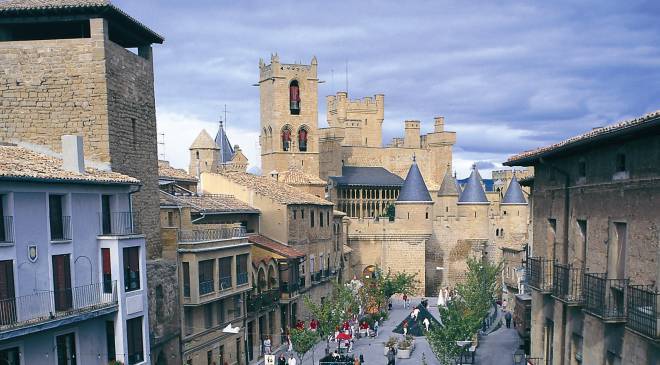
The sleek and harmonious silhouette of the Castle-Palace stands out against the skyline of Olite, a small town in the centre of Navarre just 42 kilometres south of Pamplona that was the seat of the Royal Court of the kingdom in the Middle Ages. The thick walls and crenelated towers of the Palace were home to monarchs and princes. Declared a national monument in 1925, it is the best example of civil Gothic architecture in Navarre and one of the most notable in Europe.
A walk through the narrow streets of Olite will take you past noble stone houses with coats or arms on their facades and grandiose wooden eaves, mediaeval galleries and splendid churches, and the Roman wall surrounding the town. Its Mediterranean climate has also made Olite a wine capital. Visit its bodegas (wineries) and try their wines. Let yourself be guided, the town will take you back to an era of tournaments, kings and princesses, wizards and jugglers, falconers and archers; they all return to Olite every August for a Mediaeval Fair.
2. Roncesvalles
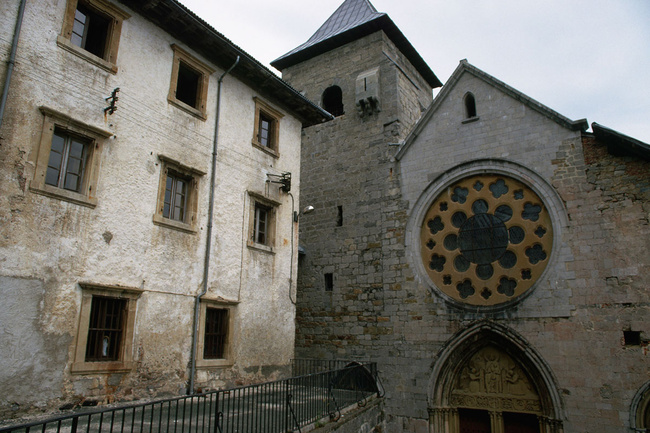
The collection of the historic buildings in Roncesvalles, located in the westernmost side of the Pyreneen mountain range, are erected on the bottom of the southern slope of the Ibañeta hill and near the wide plain of Auritz- Burguete.
A place for the pilgrims to rest after the rough ascent from the lower Navarre valleys, "The Collegiate church of Santa María de Roncesvalles" is surrounded by some mountains like: Astobiskar (1266 m.) and Ortzanzurieta ( 1570 m), distinguished because they are the oldest territories of Navarra, more than 450 million years old.
3. Puente La Reina
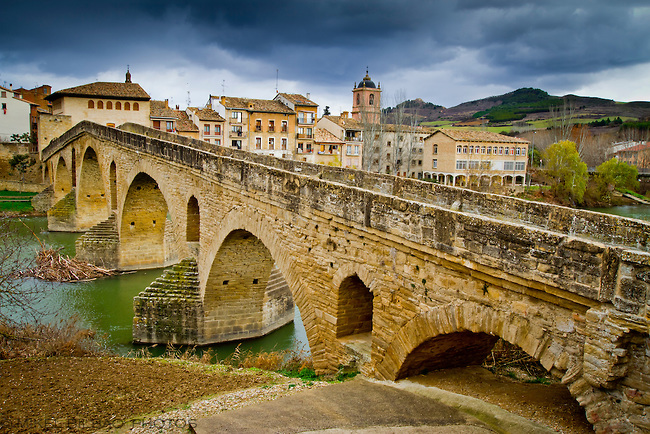
Puente la Reina, "the crossroads of the ways", is a medieval town where the two main routes on the Pilgrim's Way to Santiago de Compostela converge. It is one of the enclaves with the greatest affinity with Compostela in Navarre. The constant transit of pilgrims, the scallop shells and the walking sticks all form part of the urban landscape of this town, a magnificent example of a "street-based" town just 24 kilometres south-west of Pamplona.
Walking along the narrow Rúa Mayor is a very pleasant exercise that allows you to discover architectural gems such as the churches of the Crucifix, St. James and St. Peter and beautiful buildings peppered with details of the influence of the Pilgrim's Way. However, there is no doubt that the Romanesque bridge across the river Arga is the most amazing sight of all. It is one of the most beautiful and distinguished examples of Romanesque architecture on the way to Santiago and is what gives its name to this town of barely 2,500 inhabitants.
4. Ujué
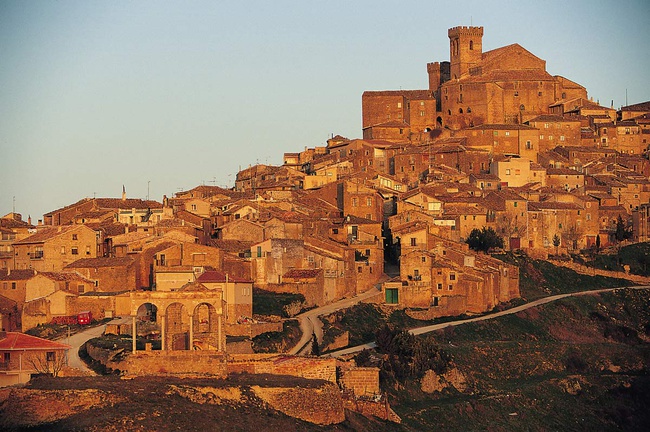
Lost up on the heights of a plateau with no rivers to refresh it and no trees to shelter it, seemingly intoxicated with its solitude, stands Ujué, a delightful medieval village of narrow streets that climb steeply upwards to reach, at the top, the Sanctuary-Fortress of Santa Maria de Ujué. Located in the Central Zone, Ujué is one of the most important places of worship in Navarre and a spectacular lookout point over the Pyrenees and riverside plains.
The Sanctuary, a national monument, is one of the most important examples of medieval architecture in Navarre, and is at the centre of a beautiful legend. On your journey, lose yourself in the maze-like layout of this tiny village of just 300 inhabitants; stroll slowly along its cobbled streets and don't miss the opportunity to try the delicious migas de pastor ('shepherd's breadcrumbs'). There are very few places that make them like they do in Ujué.
5. Elizondo

Elizondo, the capital of the Baztan valley, will amaze you with its numerous mansion houses and palaces. Its most emblematic building is the Baroque palace of Arizkunenea, but there are also other monuments of artistic interest such as the town hall, the Datue Palace, the Viceroy's house and the church of Santiago. Set in idyllic natural surroundings, the hustle and bustle that typify Elizondo have made this locality the valley's inhabitants' favourite place for holding fairs and markets.
One of the most long-standing traditions is the Baztandarren Biltzarra, a festival of colourful dances and processions that brings together all the villages in the valley. On your visit to Elizondo, be sure to try its famous urrakin egina (chocolate with whole hazelnuts). Elizondo lies at the geographical and nerve centre of the Baztan valley . Located in the north of Navarre, the valley encompasses fifteen towns within its municipal boundaries, which are dotted throughout the luxuriant green landscape of the Atlantic Pyrenees.
6. Sanguësa
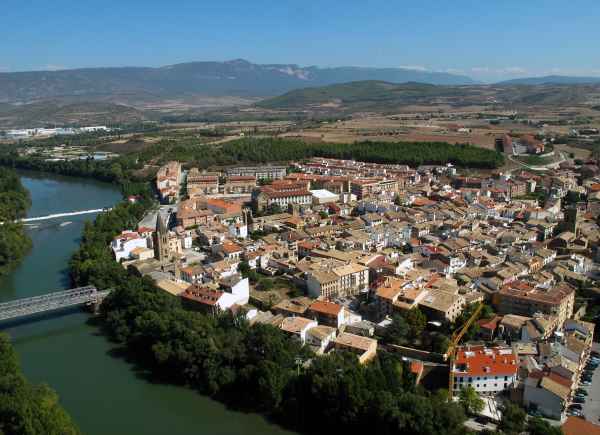
A border post on the Pilgrim's Way and a hospitable and monumental town, Sangüesa is a mixture of the mountains and the plains, a place to see and experience. Located 44 kilometres from Pamplona and with a population of just over 5,000, the most important town in medieval Navarre is well known thanks to the Pilgrim's Way to Santiago de Compostela and its architectural treasures, particularly the facade of the church of Santa María, a superb example of Romanesque architecture that has been declared a National Monument. Its interesting civil buildings, churches and convents evoke epochs of splendour and reveal a town that is very closely linked to its traditions.
On January 6th every year the Auto Sacramental de los Reyes Magos (allegorical religious play about the Three Wise Men) takes place, one of the five that has been conserved in Spain. Stroll through the old streets of Sangüesa and stop to take a look at every one of its splendid buildings; take part in its medieval traditions and try its famous pochas (succulent white beans). In a land of transition between the first peaks of the Pyrenees and the plains along the river Ebro, Sangüesa stands on the banks of the river Aragón on slightly raised ground in the eastern part of the Central Zone of Navarre, 44 kilometres from Pamplona.
7. Artajona
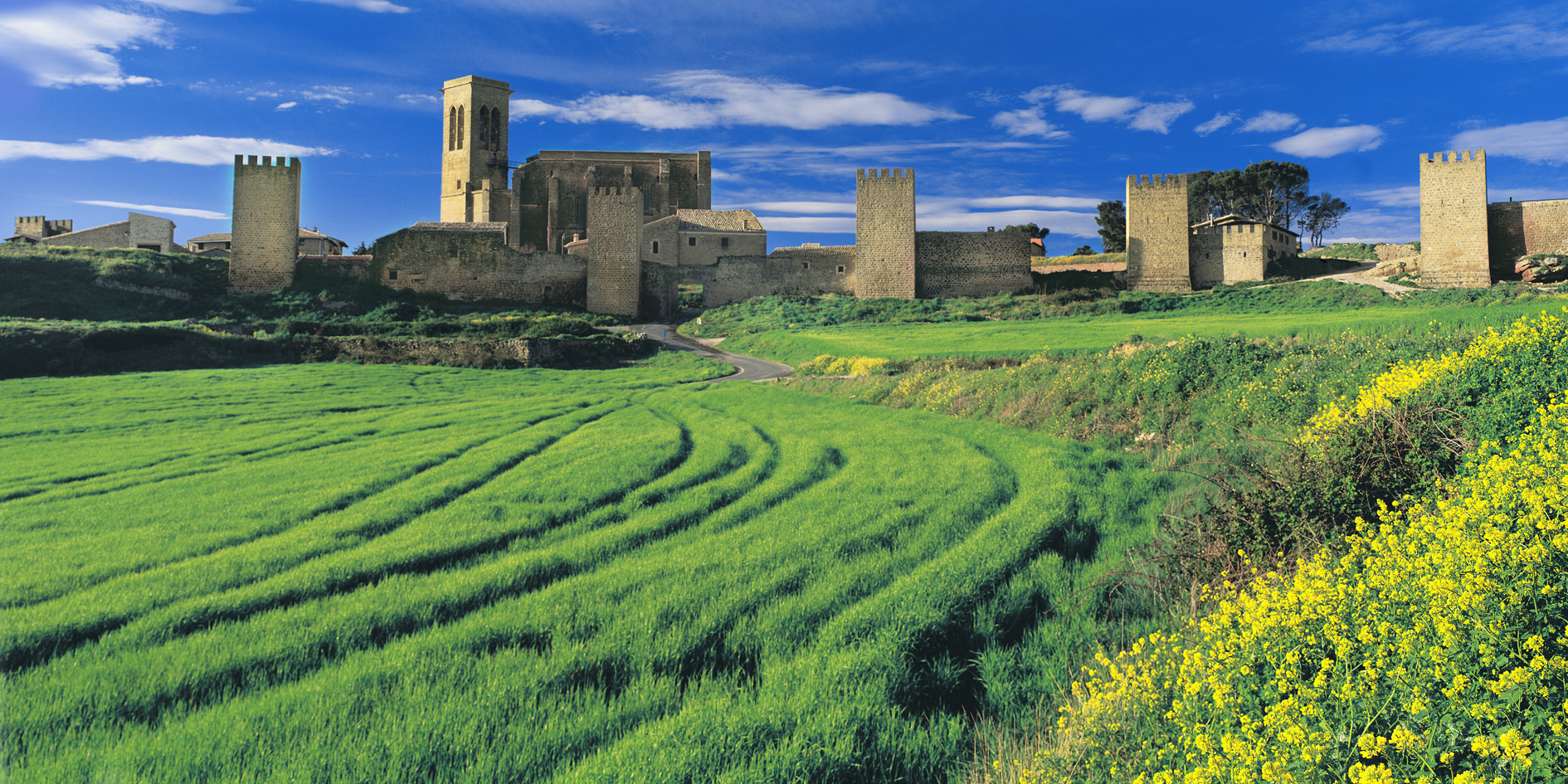
A magnificent medieval fortification crowns the top of the hill on which Artajona stands, a small village 30 kilometres from Pamplona which invites you to close your eyes and step back into a past inhabited by monarchs, noblemen, bishops and popes. This stunning eleventh-century fortress, known as "El Cerco", rises up imposingly over the village that descends down the slopes to the plain in a maze of narrow, cobbled streets, marked along the way by monumental houses and palaces.
On your journey you will discover a town of 1,700 people which, as well as "El Cerco", still preserves other buildings of interest such as eighteenth-century palaces, the Gothic church of St. Peter and, on the outskirts, the basilica of Our Lady of Jerusalem and the chapel of St. Bartholomew. You can also discover why its bells and the "fork and sickle race" are so important. The walls of Artajona, a small town in the Central Zone halfway between Puente la Reina and Tafalla, conceal a wealth of history that will take you back to the Middle Ages, times of territorial conquest and marriages of convenience when the town became the wedding present of King García Ramírez to his wife, Lady Urraca.
8. Estella - Lizarra
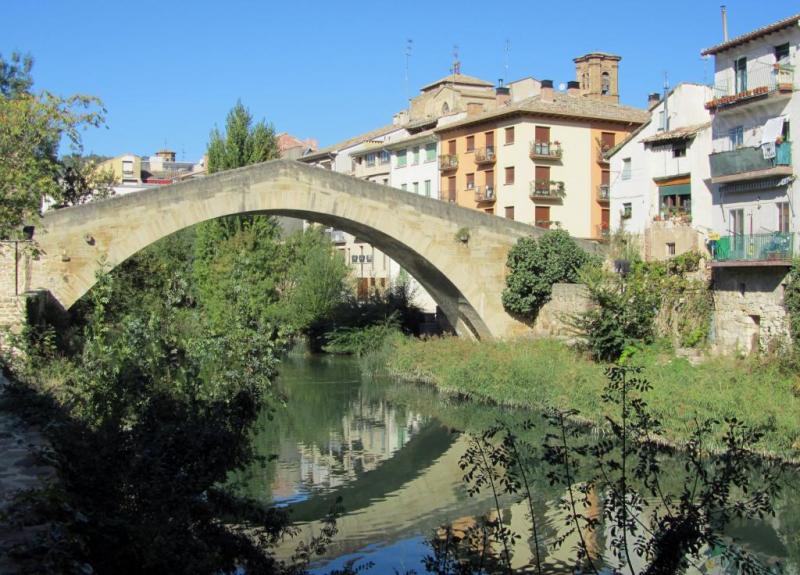
Half way between Pamplona and Logroño, in an area between the mountains and the plains, lies Estella, a historic city that came into being when pilgrims were travelling along the Pilgrim's Way to Santiago de Compostela in large number. In the 15th century it was known as "Estella the elegant" and to the present day it continues to live up to this epithet. It is a romantic city that places great value on its palaces, stately homes, churches, convents, bridges and beautiful buildings, which have earned it the nickname of the "Toledo of the North".
The city of 13,000 inhabitants will surprise you with its flourishing commercial life and bustling Thursday market, its passion for music and theatre, as well as its impeccable cuisine. Strolling through the city you will pass pilgrims and visitors eager to explore the old streets of the Franks and the Jews and see proof that the phrase coined by Aymeric Picaud is as true today as it was in the 11th century: "Estella is a city of good bread, excellent wine, much meat and fish and all kinds of pleasures."
9. Ochagavia

Ochagavía is the perfect photograph, the one that always looks right; the day or the light conditions do not matter. It is the picture postcard of the Pyrenees of Navarre, with its cobbled streets, its well-kept houses with steep roofs and the river with an old mediaeval bridge crossing it. The stone church, crowned by a robust and elegant tower, is an interesting perspective that breaks up the skyline. A landscape of high mountain peaks and dense forests complete the image, in which the very ancient dances in honour of the Virgin Mary of Muskilda must be present.
The town of Ochagavía is located 764 metres above sea level at the northernmost point of the Pyrenean valley of Salazar, in north-east Navarre. Surrounded by high peaks and beech and Scots pine forests, it is one of the most picturesque places in the Navarrese Pyrenees thanks to the architecture of its caseríos (large houses) and its location at the confluence of the Zatoia and Anduña rivers, which join here to form the river Salazar.
10. Amaiur/Maya
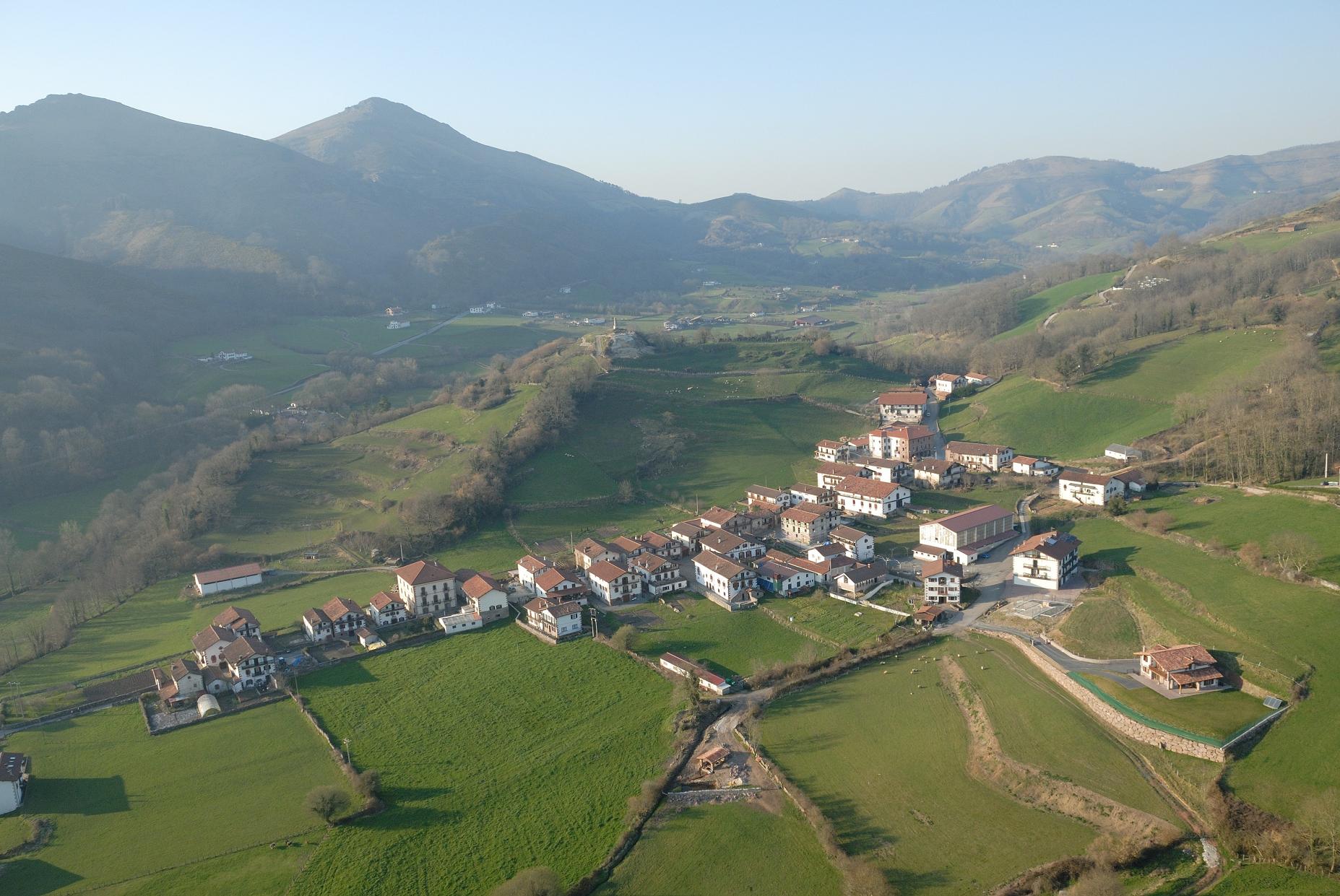
A picturesque one-street village that receives the visitor with its peculiar entry arch. The people built their houses along the route of the Pilgrims' Way in the Baztan valley. The lack of alignment and uniformity of the façades avoids monotony and leads to some excellent perspectives. The characteristic reddish colour of the stone from the quarries at Almándoz impregnates, as in the rest of the Baztan valley, its houses.
Noble house architecture has left some magnificent examples in the village, such as Palacio Arretxea or Casa Arriada, where council meetings were held in the 16th century. One of the most emblematic spots in Amaiur/Maya is located at the entry to the village. It is a restored mill that still operates, and where visitors can buy corn or wheat flour or taste recently baked talos, fine corn flour pancakes that are eaten with other products such as cheese, chocolate, or chistorra (spicy sausage).